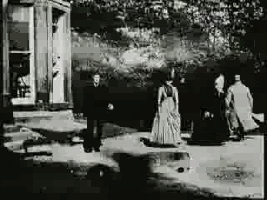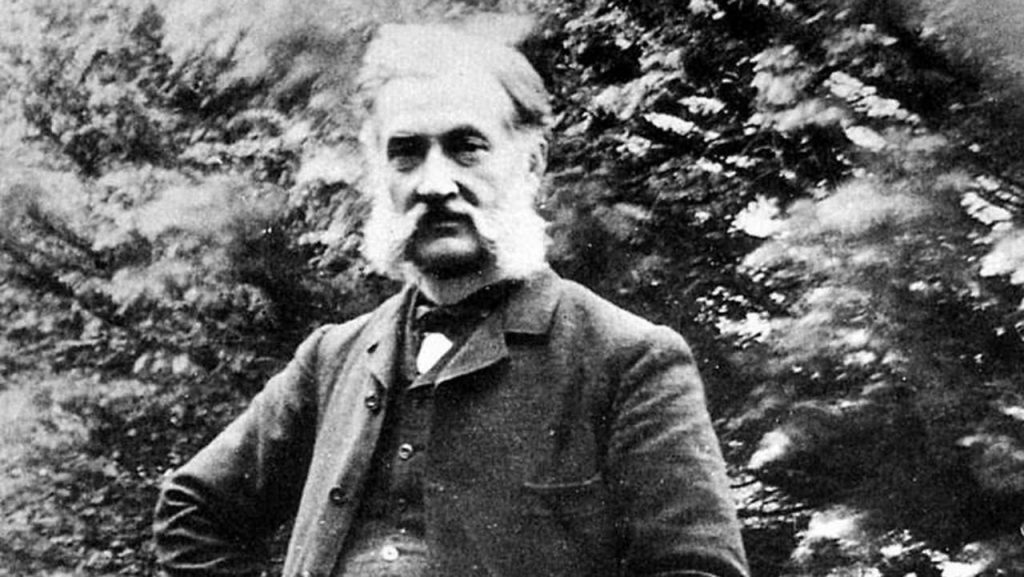Louis Le Prince
If you’ve seen the MeierMovies production logo (click above or here to view on separate page), you surely noticed the short black-and-white film that looks VERY old. What is that film, and why is it such an important feature of MeierMovies.com?
The two-second movie is Roundhay Garden Scene, shot in 1888 by cinema pioneer Louis Le Prince in Leeds, England. Motion had been “captured” before by such trailblazers as Eadweard Muybridge (with his assembly line of still-photography cameras) and Etienne Jules Marey (with his 12-images-per-second photo collages). And as early as the 1830s, Joseph Plateau had simulated animated motion with his phenakistiscope. But most historians agree that it was Le Prince who created the first true movie. Because he was likely the first to use a single-lens camera to capture motion in real time and then project that film, recreating the motion for viewers, he’s often labeled the father of cinema. Yes, Thomas Edison, William Friese-Greene, Woodville Latham, the Lumiere Brothers and others were working on similar technology during the same era, but Roundhay Garden Scene preceded them all and was, therefore, the breakthrough. And the odd personal history (and unexplained death) of Le Prince only serves to enhance his legend, and the legend of the films he shot in the late 1880s.
Roundhay Garden Scene deserves an exalted place in the history of cinema and is worthy of recognition and a proud place in the MeierMovies production logo.
The film clip is used by special permission of Britain’s National Media Museum/Science & Society Picture Library, which is instrumental in the preservation and recognition of film. For more information on Le Prince, click here. And also see the Wikipedia article. I’d also suggest checking out my lists of short films, which can be viewed by clicking the items under the “Short Lists” tab on this site’s menu bar. Those lists include two of Le Prince’s films — Roundhay Garden Scene and Traffic Crossing Leeds Bridge — in addition to countless other shorts from the pioneers of the late 1880s and 1890s.
Lastly, let me add my thanks to TL Westgate of Creative Inlet Films, who created the production logo.
(For those of you interested in the related field of the history of recorded sound, check out my appearance on the December 2020 episode of the In a Manner of Speaking podcast. Also of interest is the Niépce Heliograph, from 1927, the world’s oldest photograph.)

